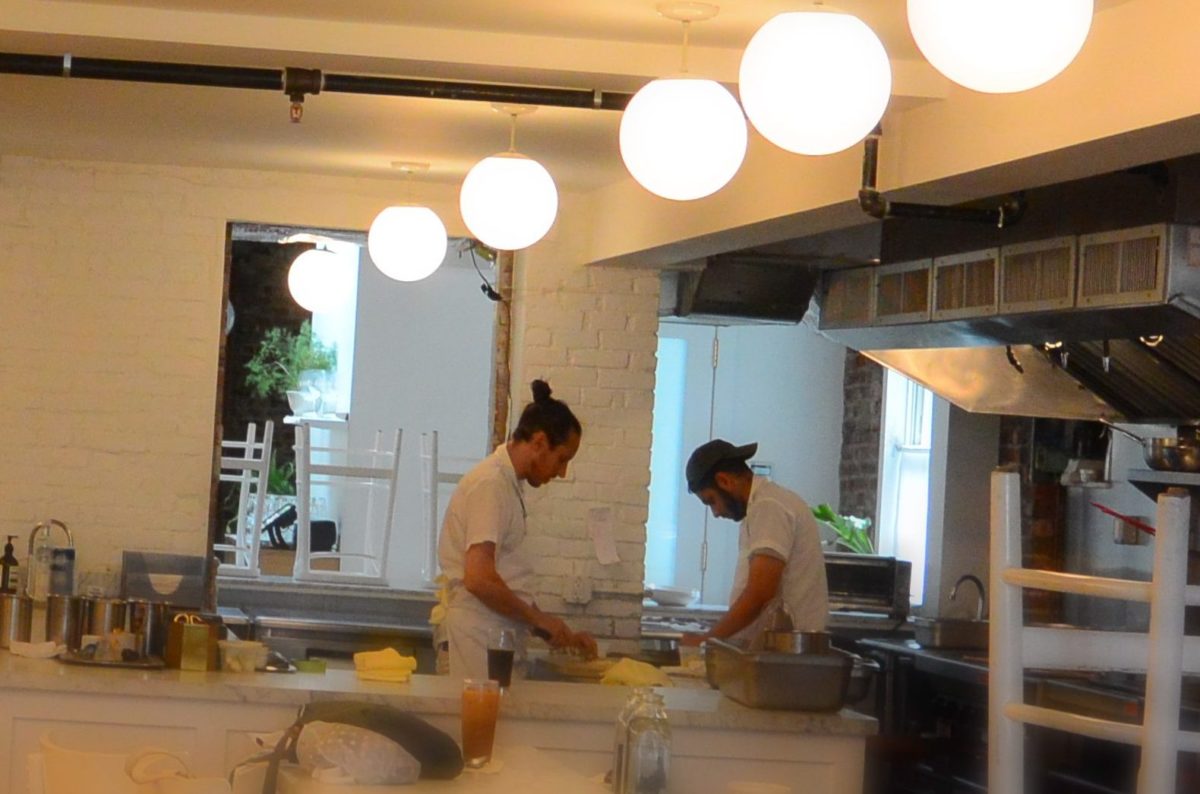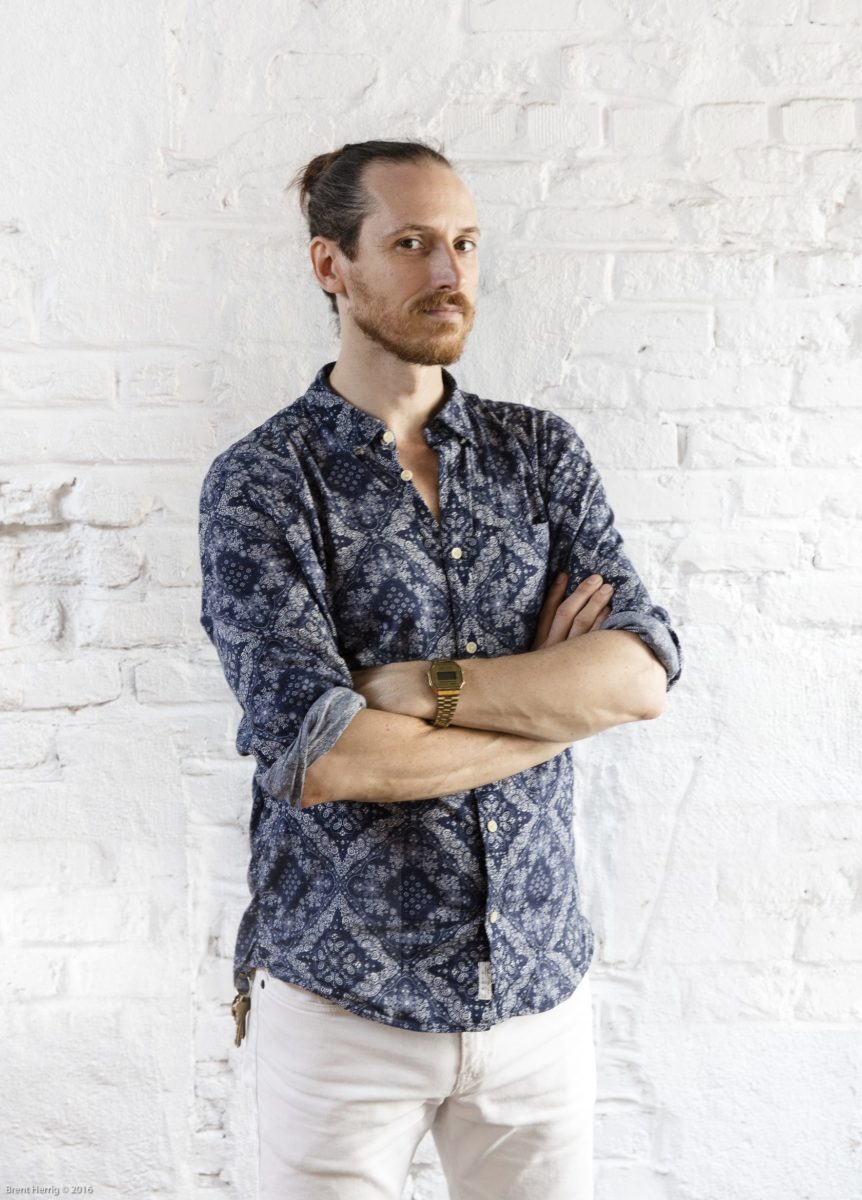
Gabe McMackin is as wholesome and dynamic as the food he creates. Chef and owner of the four-year-old restaurant in Brooklyn, New York, The Finch, he moves through the space of the renovated brownstone with energy and an undeniable love for what he does. His 20-year resume is rich: Blue Hill at Stone Barns, Thomas Moran’s Petite Syrah, Roberta’s, Gramercy Tavern, and Martha Stewart’s merchandising team.
While these were stepping stones, McMackin describes each of these food experiences along the way as life-altering. He cherishes each one; he attributes his current habits and philosophies in the kitchen to these irreplaceable stages in his culinary past.
In 2015, I sat with the chef by the front window of his Clinton Hill restaurant, poured me an iced coffee, and proceeded to share stories that embody his passion.
“My goal with this restaurant is to be a part of a larger dialogue about hospitality. It’s not about a particular thing – the food or the space or the wine or the service. It’s about having a great time with really nice people, and to do the best possible job that we can.” Clearly, this chef has done something right with this endeavor as accolades such as “hottest brunch restaurant” and “13 Under the Radar Chefs You to Know in New York” exist – not to mention a 2017 review in The New Yorker.
Only 10 months after it opened, The Finch was distinguished with a star in the prestigious Michelin Guide, and it was given another one in 2018. When asked about the honor, McMackin said, “The reason I made this place is not for the recognition. It’s to be a part of a conversation with our guests, with our staff, with all the cooks, with all the people who make or grow or produce the food we use.” He explained that the restaurant’s mission intertwines all of those components. It’s important to him not only to obtain the right ingredients, but to have a good relationship with the farmers and producers with whom he works.
Gabe McMackin is as wholesome and dynamic as the food he creates. Chef and owner of the barely two-year-old Michelin-star restaurant in Brooklyn, New York, The Finch, he moves through the space of the renovated brownstone with energy and an undeniable love for what he does. His 20-year resume is rich: Blue Hill at Stone Barns, Thomas Moran’s Petite Syrah, Roberta’s, Gramercy Tavern, and Martha Stewart’s merchandising team.
While these were stepping stones, McMackin describes each of these food experiences along the way as life-altering. He cherishes each one; he attributes his current habits and philosophies in the kitchen to these irreplaceable stages in his culinary past.
Recently the chef sat with me by the front window of his Clinton Hill restaurant, poured me an iced coffee, and proceeded to share stories that embody his passion.

McMackin recalled cooking for a new vendor who had just started a hydroponic farming operation “growing all of these beautiful lettuces and greens here and trying to scale up and grow things as a really interesting new model.” He said it was a pleasure to watch the farmer eat a dish made with his own products. “To see him light up as he’s tasting. Not just as he’s seeing how we’re taking his ingredients and putting them into play, but what our creative process is like.”
The concept of evolution is crucial to Gabe. He named his restaurant “The Finch” after the finches that, in 1860, Charles Darwin said illustrated natural selection through their diversity.
McMackin has loved restaurants and food for as long as he can remember. He recalls wandering around a garden as a boy and eating whatever he could get his hands on that was ripe, and learning the differences between types of tomatoes. His family lived next to a dairy farm, a sheep farm and a nature preserve.
Growing up with a mother who was a gardener and a teacher, and a father who “grew tremendously good fruit,” he had a sense of joy about growing and making food, but at first resisted the lifestyle of a chef, hoping to find “that pleasure, that drive, that creative influence” from a “more manageable source.”
McMackin recalled cooking for a new vendor who had just started a hydroponic farming operation “growing all of these beautiful lettuces and greens here and trying to scale up and grow things as a really interesting new model.” He said it was a pleasure to watch the farmer eat a dish made with his own products. “To see him light up as he’s tasting. Not just as he’s seeing how we’re taking his ingredients and putting them into play, but what our creative process is like.”
The concept of evolution is crucial to Gabe. He named his restaurant “The Finch” after the finches that, in 1860, Charles Darwin said illustrated natural selection through their diversity.
McMackin has loved restaurants and food for as long as he can remember. He recalls wandering around a garden as a boy and eating whatever he could get his hands on that was ripe, and learning the differences between types of tomatoes. His family lived next to a dairy farm, a sheep farm and a nature preserve.
From working with plants in a nursery at age 15, washing dishes, working as a runner and back waiter, and as a prep chef, McMackin built a strong foundation for himself as a chef and restaurant owner. He spoke about the importance of all of these stages. “I learned about how to wash dishes well. That’s the foundation that every restaurant is built on. If you don’t have a happy dish washer, if you don’t take care of your plates well, you can’t really serve your guests well.” He also described learning how to pour water correctly and how to carry big chairs up three flights of stairs from the kitchen to the dining room.
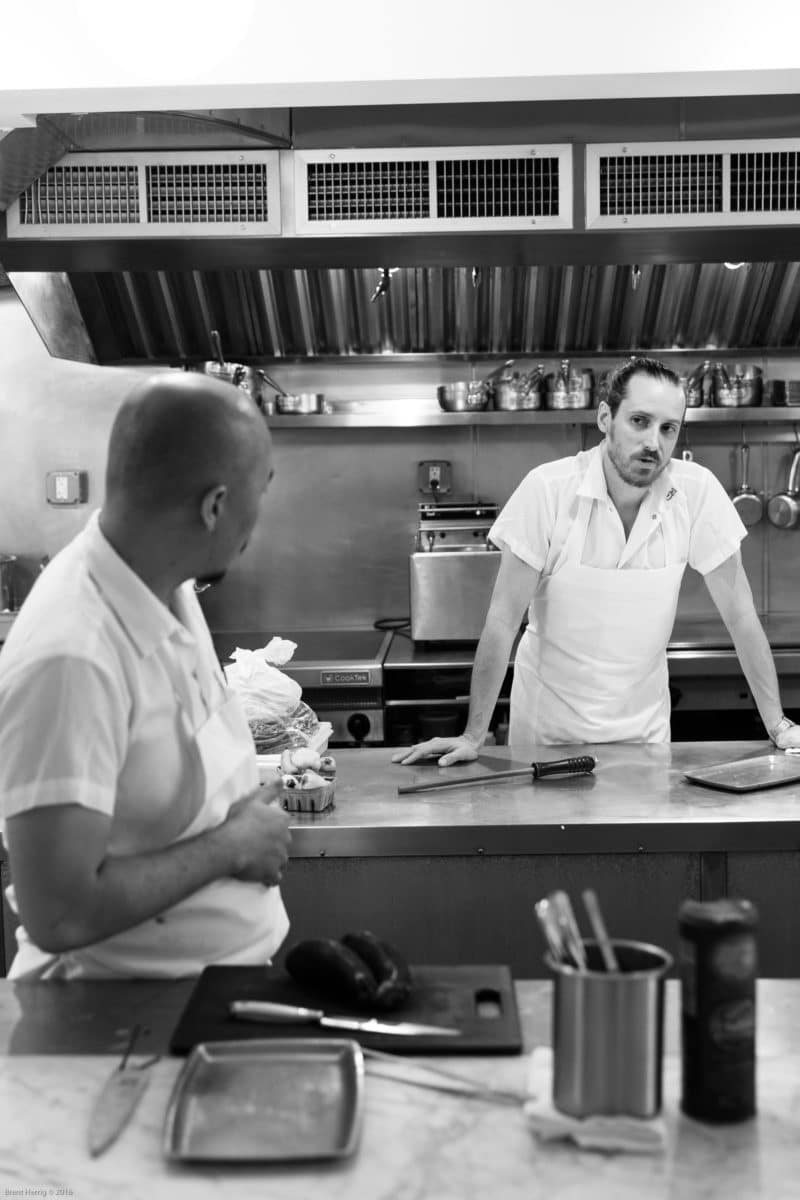
During college, he worked at Sperry’s in Saratoga, New York, where he enjoyed the sense of camaraderie in the kitchen. “When you are working together to build something, you form a certain bond.” He moved to New York City right after college, worked at magazines, dot-coms, and did catering on the side. He loved catering so much he decided to get out of New York and work with food.
An experience that he considers a turning point on this journey was working for Thomas Moran in Connecticut. “I learned a lot from him about how to cook, how to think, how to move, how to work, both in his system and how to do my own thing. He gave me a lot of positive encouragement and some creative freedom to develop ideas.”
Then, at Blue Hill at Stone Barns, he found “this incredible beautiful system, the practice of making food and caring for ingredients.” He called it the hardest work he has done in his life.

Working as corporate chef for merchandizing for Martha Stewart brought an opportunity for McMackin to work on cookbooks, magazines and a line of retail food for Costco. He loved thinking about food in that different way. He also felt inspired by those he encountered. He described Martha Stewart and other luminaries in the retail industry as “magic creatures in the world of making food and lifestyle and hospitality.”
After that, he went to Roberta’s, a pizzeria in Brooklyn, New York. He was given free reign and told “go to the market and get what you want.” It became another turning point in his culinary career. He was inspired by everyone at Roberta’s and similarly by those at The Gramercy Tavern in Manhattan. “They have weighed heavy in my mind in all the best ways.”
McMackin considers the restaurant world a beautiful way of life with many challenges – money, time, and the hard physical lifestyle. He spoke candidly about the long hours, the strain on the body, the putting out of small fires. When asked, “How do you do it, how do you strike a balance between work and life?” he smiled and replied, “So far, I have no idea…I [want] to figure out a way to be involved in food and provide for my staff and for myself that balance in life, and make it a tenable lifestyle decision.”
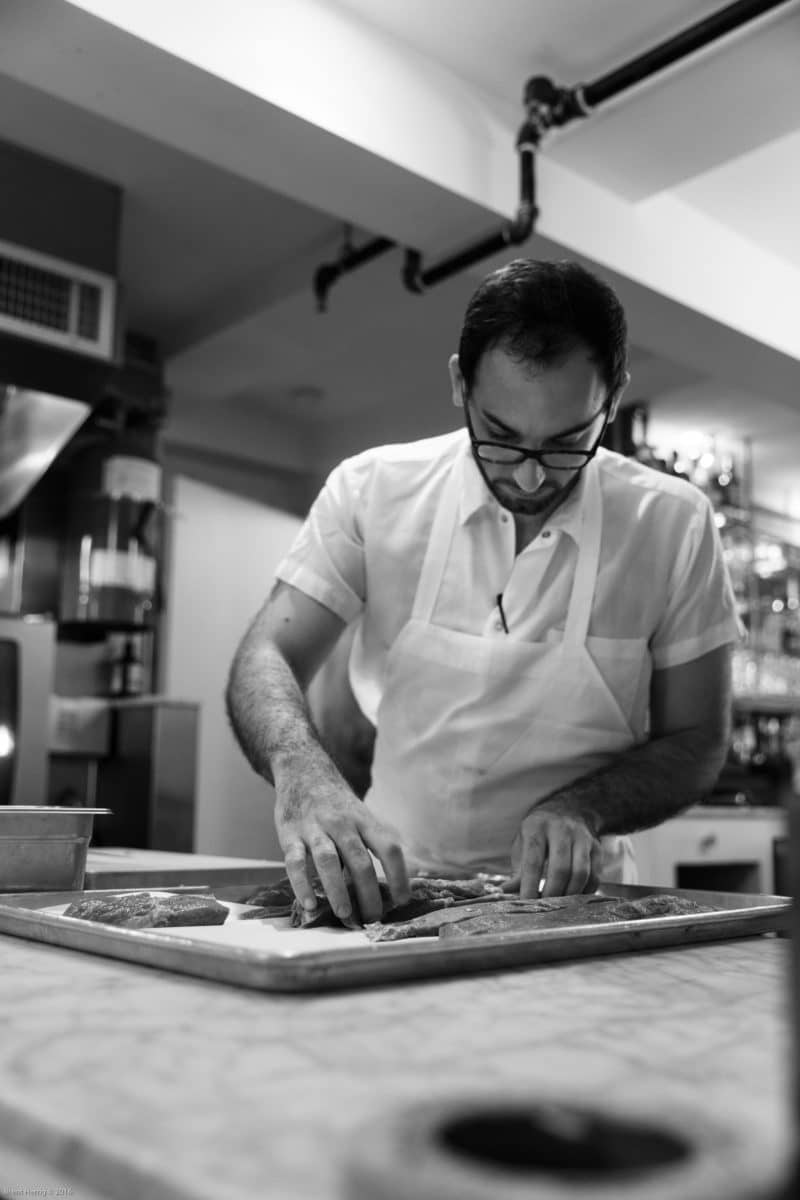
After that, he went to Roberta’s, a pizzeria in Brooklyn, New York. He was given free reign and told “go to the market and get what you want.” It became another turning point in his culinary career. He was inspired by everyone at Roberta’s and similarly by those at The Gramercy Tavern in Manhattan. “They have weighed heavy in my mind in all the best ways.”
McMackin considers the restaurant world a beautiful way of life with many challenges – money, time, and the hard physical lifestyle. He spoke candidly about the long hours, the strain on the body, the putting out of small fires. When asked, “How do you do it, how do you strike a balance between work and life?” he smiled and replied, “So far, I have no idea…I [want] to figure out a way to be involved in food and provide for my staff and for myself that balance in life, and make it a tenable lifestyle decision.”
Then there’s the dance. “There’s this great dance of service. Managing logistics. We have two minutes on this, that needs three, slow that down. We converge. Being able to feel all of that coalesce, being able to put it in front of somebody and say I made this for you, this is beautiful. That’s this theatrical moment, this theatrical telling of a story.”
When asked what a day in the life of Gabe McMackin looks like, he said he begins his day by playing with his son Jasper and ends his day at closing time, close to 1:30 am. In between he tends to small problems, supports his staff, and connects with guests who walk in the door. “It can be a long but beautiful day.” He tackles issues ranging from a daily closing procedure to handling finances and food costs.
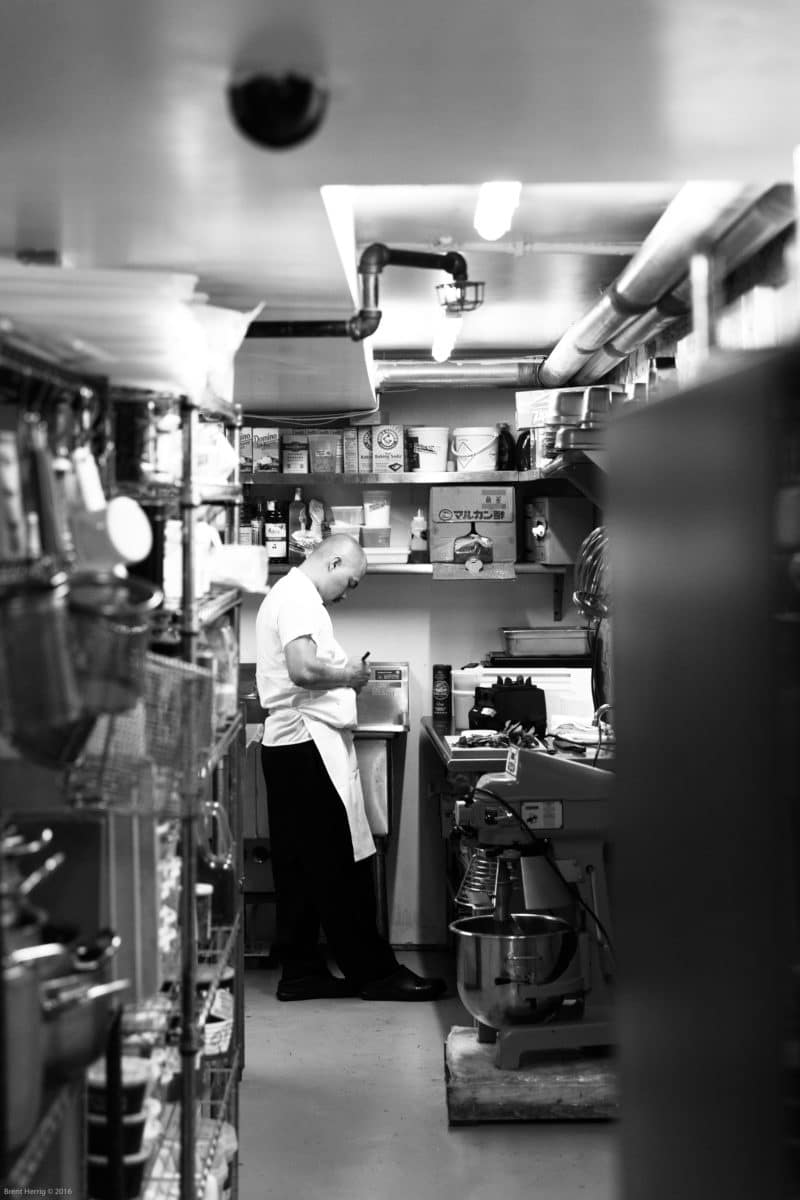
“There’s so much attention given to what food should cost. That ties back to farm subsidies. That ties back to labor laws and increased minimum wage. There are a lot of hot button issues, so much of that ties back to the question, What do people want to spend on food?”
Because a Michelin star award is based partially on consistency, I asked him if he found that limiting. He answered, “I see consistency as a part of why we were given the award. I don’t see it as the origins of our award. I see it as a vote of confidence and as an award for driving an exciting process.”
In a recent conversation with McMackin, when asked to reflect on The Finch since we spoke during that initial interview, he said, “The main thing I’d say is that we’ve gotten better at being us. I’ve tried my best to stay focused on making great food, taking care of our guests, and being present in the space. I feel very proud of that. We’ve had all manner of problems, all manner of challenges, some great people have joined the team, and interesting opportunities have come along. But in all cases, I tie back to us being us — it’s all got to make us a bit better at making a comfortable, happy and special thing at 212 Green Avenue.”

McMackin described the challenges in his work as the best problems he’s ever had. During our conversation, he does not dwell on the tough moments. Instead, he speaks of the joy of seeing people walk through his door and being able to greet them with a smile. “We’re here – to borrow Sanford Meisner’s words – ‘living truthfully under imaginary circumstances.’” He focuses on the positive energy that exists in a creative space and situation with food.
He describes “that burst of pleasure of making a beautiful dish, that new idea. I want to make this ravioli with this kind of explosion of flavor happening or that texture.” ![]()

First published October 2016
